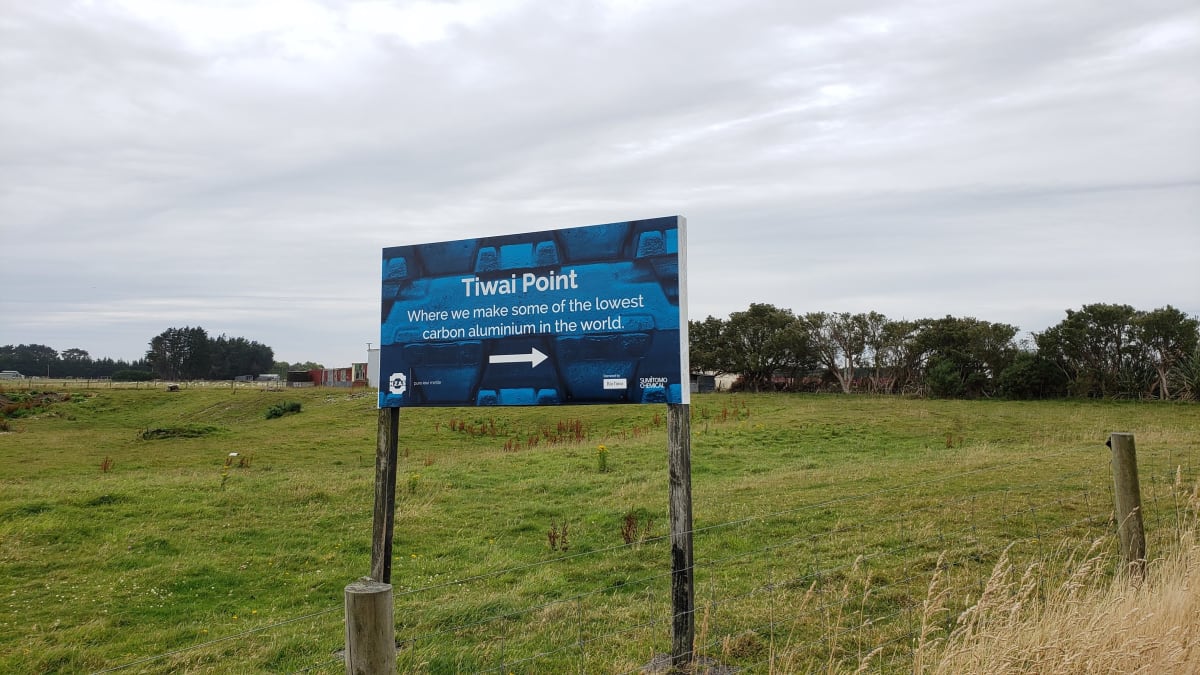
The Government has dramatically cut back the annual allocation of free carbon credits to the Tiwai Point aluminium smelter, Marc Daalder reports
The annual subsidy that the Tiwai Point aluminium smelter (NZAS) receives to shield it from the costs of New Zealand's carbon price has been slashed by an estimated $60 million.
The decision, detailed in Cabinet documents released on the Ministry for the Environment website on Thursday, was approved by Cabinet in December. It will see the smelter receive around 600,000 New Zealand Units (NZUs) - carbon credits used in the Emissions Trading Scheme (ETS) - each year for the next four years, down from around 1.5 million that it would have otherwise been granted.
Climate Change Minister James Shaw acknowledged in a Cabinet paper that the change "will likely be controversial and have considerable fiscal implications within the NZ ETS". It comes after the smelter renegotiated its electricity contract with Meridian, earning a sweetheart deal that the Electricity Authority says will see household power bills rise by $200 to make up the difference.
NZAS chief executive Chris Blenkiron said the company accepts the decision, but the Cabinet documents make clear it argued strenuously against a reduction of the subsidy.
Like other big industrials which export their products, the smelter is entitled to a free allocation of NZUs to level the playing field when competing with overseas companies that don't face a carbon price. Some of these free units are tied to the greenhouse gas emissions that arise from the smelting process - this allocation remains unchanged, although the Government is reviewing methodologies for all recipients to make sure they are not being over-subsidised, as Newsroom reported last year.
The bulk of the smelter's allocation (about 61 percent, according to the Cabinet documents) comes as a result of the indirect pressure of the carbon price. Because it is a major electricity user, responsible for about 13 percent of the power used in New Zealand each year, Tiwai is able to earn units to offset any increases to the power prices it pays as a result of the carbon price being applied to fossil fuelled electricity generation.
However, independent modelling commissioned by the Government found that the smelter's new deal with Meridian offers it power at such a cheap price, fixed at a specific rate through the end of 2024, that it is unaffected by the carbon price on electricity.
"The evidence suggests there is no indirect cost from the NZ ETS on the electricity price agreed in the main contract," officials wrote in a regulatory impact statement. As a result of this finding, Shaw proposed entirely removing Tiwai's allocation of credits for electricity costs - estimated to be more than 900,000 NZUs for 2021. At the current market price of $74 per unit, that allocation would have been worth nearly $70 million.
In the Cabinet paper, Shaw wrote that those units could potentially be auctioned off in future years, earning tens of millions of dollars for the Government's climate fund, which is sourced from ETS revenue.

The Cabinet paper and regulatory impact statement make clear that the smelter argued against the change. Meridian was also consulted but its views were redacted in the released documents.
"NZAS prefers the status quo, which in my view overestimates emissions costs and results in an overallocation of $60 million per year to the benefit of NZAS," Shaw wrote in the paper.
Officials reported that NZAS believed the Government had promised not to change allocations in a December 2020 letter from Finance Minister Grant Robertson. However, they said, "The letter does not include agreement in respect of the NZUs NZAS receives under the [Climate Change Response Act] CCRA. Changes to the allocation of units are simply not affected by this proposal, and changes under the CCRA can still be considered."
The smelter also accused the independent modeller of having a bias and said that modelling couldn't reflect the complexity of the carbon price's impact on NZAS' power price.
"The modeller has demonstrated in previous analysis a consistent view that EAFs should be based on long run considerations (as opposed to short run or a combination) and should therefore be lower than it is," NZAS argued in its submission. It is unclear whether this is an exact quote or paraphrasing by MfE officials.
Officials responded to the argument by insisting "The independent electricity modeller used the standard EAF to simulate the price effect of carbon on general electricity prices. NZAS's perspective that the modeller has a bias does not offer sufficient evidence or a technical argument."
They concluded by noting that the smelter hadn't raised concerns about its ongoing viability.
"It is notable that NZAS’s argument did not refer to economic viability. This indicates that the investment into and operation of the additional production line is not challenged by using an EAF different from the status quo."
Blenkiron touted the smelter's green credentials in a statement to Newsroom.
"The recent decision to set the electricity allocation factor under the New Zealand Emissions Trading scheme for NZAS’s current electricity agreement to zero is one we accept, however we note that aluminium production accounts for less than 1 percent of New Zealand’s total carbon emissions while aluminium continues to play a critical and growing role in a world economy focused on decarbonisation. At NZAS we are proud to produce some of the lowest carbon aluminium in the world while many of our international competitors producing high carbon metal are not facing a price on carbon."







